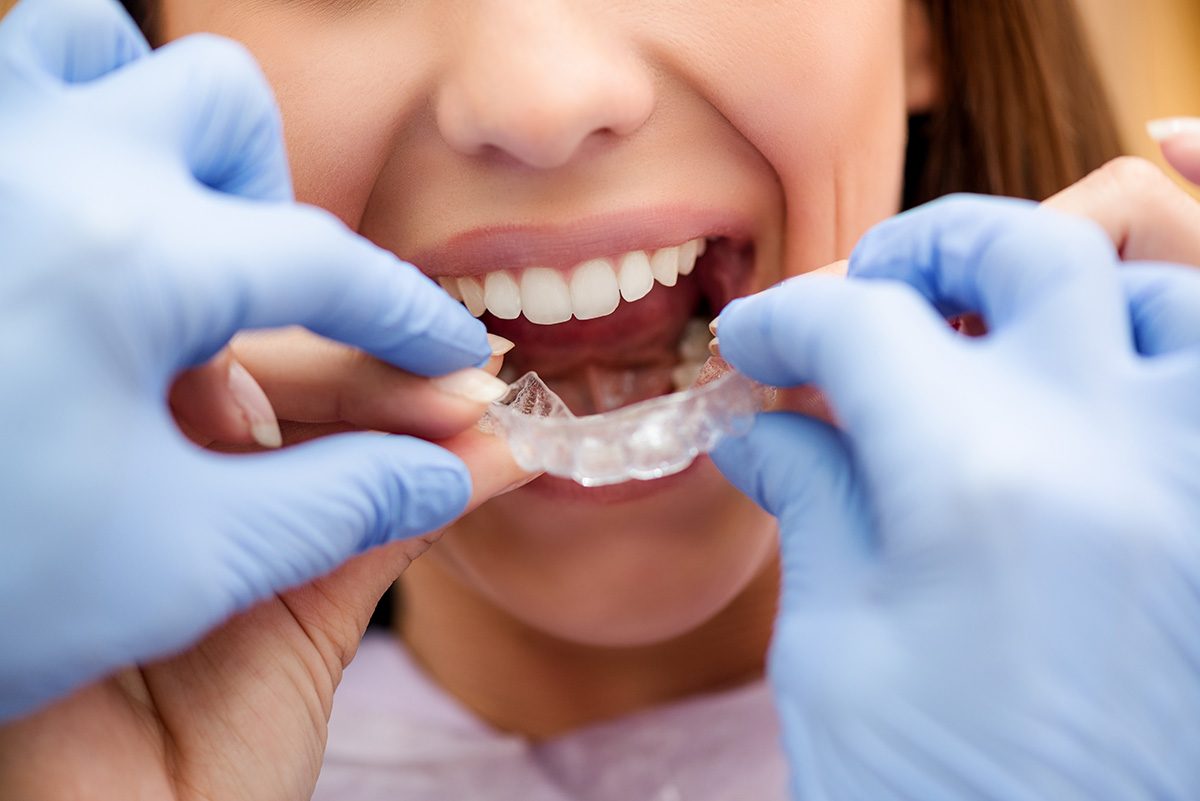5 Simple Techniques For Legacy Orthodontics
5 Simple Techniques For Legacy Orthodontics
Blog Article
4 Easy Facts About Legacy Orthodontics Shown
Table of ContentsSome Known Details About Legacy Orthodontics About Legacy OrthodonticsNot known Facts About Legacy OrthodonticsTop Guidelines Of Legacy OrthodonticsSome Known Facts About Legacy Orthodontics.
In enhancement, we provide flexible therapy schedules, versatile settlement options and an enjoyable, delightful experience.An orthodontist is a dental practitioner educated to detect, stop, and treat teeth and jaw abnormalities. Orthodontists function with people of all ages, from children to grownups.
Malocclusion, or misaligned teeth, can lead to oral concerns, including tooth degeneration, gum disease, and tough or unpleasant eating. Yet not every person is birthed with straight teeth. If you have a poor bite or big areas in between your teeth, you might wish to get in touch with a dental expert specializing in orthodontic treatment.
What Does Legacy Orthodontics Do?
( Image Credit Report: DigitalVision/Getty Images) Orthodontists utilize repaired and removable oral tools, like dental braces, retainers, and bands, to alter the setting of teeth in your mouth. Orthodontic therapy is for oral abnormalities, consisting of: Uneven teethBite troubles, like an overbite or an underbiteCrowded teeth or teeth that are also much apartJaw misalignmentThe goal of orthodontic therapy is to enhance your bite.
A healthy and balanced bite ensures you can consume, chew, and talk effectively. While you could consider orthodontists as primarily for children or teens who require dental braces, they can fix dental problems at any type of age. Orthodontists attend university, oral college, and orthodontic school. After graduation, they invest 2 or 3 years in an orthodontic residency program.
All orthodontists are dental professionals, yet not all dental practitioners are orthodontists. Orthodontic residency programs offer extensive, concentrated instruction for dental specialists. They concentrate on 2 areas: Just how to effectively and securely move teeth Exactly how to correctly direct advancement in the teeth, jaw, and faceOnce an orthodontist has finished training, they have the alternative to become board certified.
All about Legacy Orthodontics
Misalignment, or malocclusion, is the most typical factor individuals see an orthodontist. It is hereditary and is the outcome of size differences between the upper and lower jaw or in between the jaw and teeth. Malocclusion results in tooth overcrowding, an askew jaw, or irregular bite patterns. Malocclusion is normally treated with: Your orthodontist connects metal, ceramic, or plastic square bonds to your teeth.
If you have just small malocclusion, you may be able to use clear braces, called aligners, rather than conventional braces (https://legacyortho1.weebly.com/). Some people require a headgear to aid move teeth right into line with pressure from outside the mouth. After braces or aligners, you'll need to wear a retainer. A retainer is a custom tool that keeps your teeth in position.
They can create additional area in the mouth without having to pull teeth. Orthodontists make use of wires, surgical screws, or plates to sustain your jaw bone.
You might require to see an orthodontist if you have: Crowding or not sufficient area for every one of your teethOverbite, when your top teeth come over your bottom teethUnderbite, when your bottom teeth are too far forwardSpacing or issues with gapsCrossbite, which is when your top teeth fit behind your bottom teeth when your mouth is closedOpen bite or a vertical gap in between your front base and top teethMisplaced midline, when the center of your base and upper teeth don't line up Dealing with an oral malocclusion can: Make biting, chewing, and talking easierImprove the balance of our face and your total appearanceEase discomfort from temporomandibular joint problemsDifferent your teeth and make them much easier to clean up, aiding protect against dental caries or cavities It's typically a dental professional who initially notices misaligned teeth throughout a routine examination.
5 Simple Techniques For Legacy Orthodontics

During your initial orthodontic assessment, you'll likely have: An oral examPhotos taken of your face and smileDental X-raysPanoramic (360 level) X-rays of your face and headImpressions to produce mold and mildews of your teethThese tests will assist your orthodontist know just how to wage your treatment. braces. An orthodontist is a dentist who's had training to treat your teeth and jaw
Orthodontists may carry out surgery, exams,X-rays,and more to aid you attain a much more comfy, much healthier smile. An orthodontist is concentrated on your bite, so something like a cracked tooth would be managed by a dental expert. Orthodontists are dental professionals however not all dentists are orthodontists. Orthodontists are concentrated on your bite, or the means your teeth fit together, and the straightness of your teeth.
Ever asked yourself exactly how stars always appear to have flawlessly straightened teeth? The solution often lies in the experienced hands of an orthodontist. What specifically does an orthodontist do? Orthodontists are dental professionals that concentrate on correcting irregularities in the teeth and jaws. Their experience goes past simply developing a lovely smile; it extends to enhancing your overall oral health and feature.
Everything about Legacy Orthodontics

While braces are the most generally acknowledged orthodontic treatment, orthodontists have a varied toolkit at their disposal. The certain technique picked depends on the extent of the instance, the individual's age, and individual choices. These tried-and-true braces utilize a system of brackets adhered to the teeth and attached by cords.
Clear aligners, like Invisalign, are a popular choice for patients seeking a more discreet therapy alternative. These removable trays are custom-made to progressively move the teeth's position. Headwear may be made use of combined with braces or aligners to apply additional targeted pressures, particularly description for remedying jaw inconsistencies. In cases of slim jaws, palatal expanders can be used to produce area for appropriate tooth positioning.
Report this page